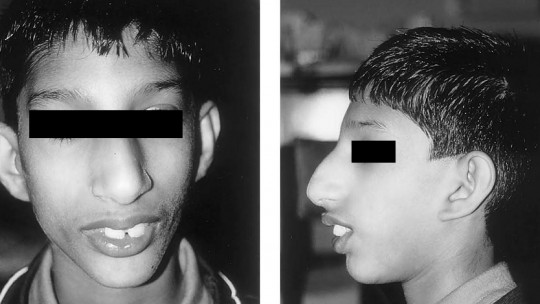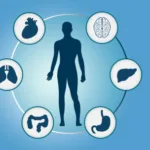
Within the infinite list of known rare diseases, there are some as mysterious to the scientific community as Sudeck syndrome, whose first record dates back to 1864
Throughout this article we will describe what this strange syndrome consists of, which causes immense pain in those who experience it. Likewise, we will talk about its symptoms, its possible causes and its treatment.
What is Sudeck syndrome?
Sudeck’s disease, also known as complex general pain syndrome (CRPS), It is a disease characterized by being quite painful that affects one or more body extremities.
This condition tends to originate after some type of injury or operation, and is distinguished by being a multisymptomatic and multisystemic syndrome. The degree of pain and the evolution of Sudeck syndrome does not have to correspond to the magnitude of the injury that triggers it.
It is vital that this strange syndrome is diagnosed at the earliest stage possible. Otherwise, could end up spreading to all extremities making your recovery much more painful and difficult.
Given the high levels of pain caused by this disease, the person can reach manifest serious psychological alterations, pharmacological dependence or even develop complete disability.
Another factor that makes this disease so disabling for the person who suffers from it is that its course is totally unpredictable and can vary exaggeratedly from one person to another.
Symptoms and clinical picture
As mentioned above, Sudeck disease has a wide variety of clinical features. These symptoms include pain or changes in the skin and bones Next, we will describe each of these clinical symptoms:
1. Pain
This syndrome has the uniqueness that the person experiences pain of disproportionate proportions compared to the magnitude of the injury or damage that causes them.
In addition, it may be accompanied by mobility difficulties that appear after the injury. One of the first symptoms that appear in Sudeck syndrome patients is severe, constant, deep, burning pain.
Finally, any type of friction, regardless of its intensity, is experienced as a painful sensation of the highest level.
2. Skin disorders
The dermis may present symptoms of dystrophy or atrophy, as well as dryness with or without peeling. Likewise, the abnormal sympathetic activity caused by this disease may be related to alterations in skin pigmentation, skin temperature and sweating levels
3. Bone alterations
Sudeck syndrome can cause bone wear or osteoporosis in the joints. This wear and tear can be seen through x-rays and bone scans.
4. Motor disorders
People affected by this disease experience great difficulties in performing any type of movement These difficulties are caused by the intense pain they experience due to increased muscle tone.
As a consequence, patients tend to reduce their movements, thus generating diffuse muscle atrophy. Other motor symptoms are tremors or involuntary reflex movements.
5. Inflammation
In most cases, patients present localized inflammation in the place where the pain occurs.
All of these symptoms tend to be localized to the site of the injury. However, as the disease evolves, all these symptoms will begin to spread. There are 3 patterns that describe the spread of the disease:
Causes and risk factors
The causes of Sudeck’s illness are currently unknown. Therefore, still It is not understood why the sympathetic system is constantly in hyperactive mode
Some theories hypothesize that this hyperactivity causes an inflammatory response that causes constant spasms at the site of the injury. Likewise, these spasms can cause the pain to increase more and more, thus becoming a continuous cycle of discomfort.
Although the causes are unknown, there are a series of risk factors that are associated with Sudeck syndrome These are:
Diagnosis
Since there are no specific diagnostic tests for Sudeck syndrome, a differential diagnosis is necessary in which any other disorder with similar symptoms is ruled out.
Following this, the diagnosis will be made mainly by observing signs and symptoms. Some of the tests that can be carried out to try to diagnose this disease are:
1. X-rays
Through the use of x-rays it is possible to identify a kind of speckled osteoporosis characteristic of this syndrome.
2. Nuclear magnetic resonance
This is a useful test for the early detection of Sudeck syndrome, especially when the lesion is located at the level of the hip.
3. Thermography
Thermography is a test in which, through the use of a specialized camera, can measure the heat emitted by the body
4. Laboratory analysis
Through blood and urine tests, the presence of hypertriglyceridemia, hyperuricemia, hypercalciuria and hydroxyprolinuria
Treatment
The most important goal in the treatment of Sudeck syndrome is get the patient to use the affected limb
Through the use of medications, physical therapy or nerve blocks, the aim is to reduce the pain. In addition, intervention with physiotherapy will teach the patient to use their affected limb in their day-to-day activities.
Physical exercises such as swimming or any other aquatic activity have been shown to be highly effective in patients affected by the lower extremities.
Psychological support is of vital importance in the treatment of Sudeck syndrome. Your goal is reinforce the mental or psychological aspects of the disease as well as motivating the patient to carry out pain management techniques.
If this treatment can be carried out during the early stages of the disease, the probability of complete remission is approximately 85% In cases where the disease does not receive adequate treatment, it can become chronic.








